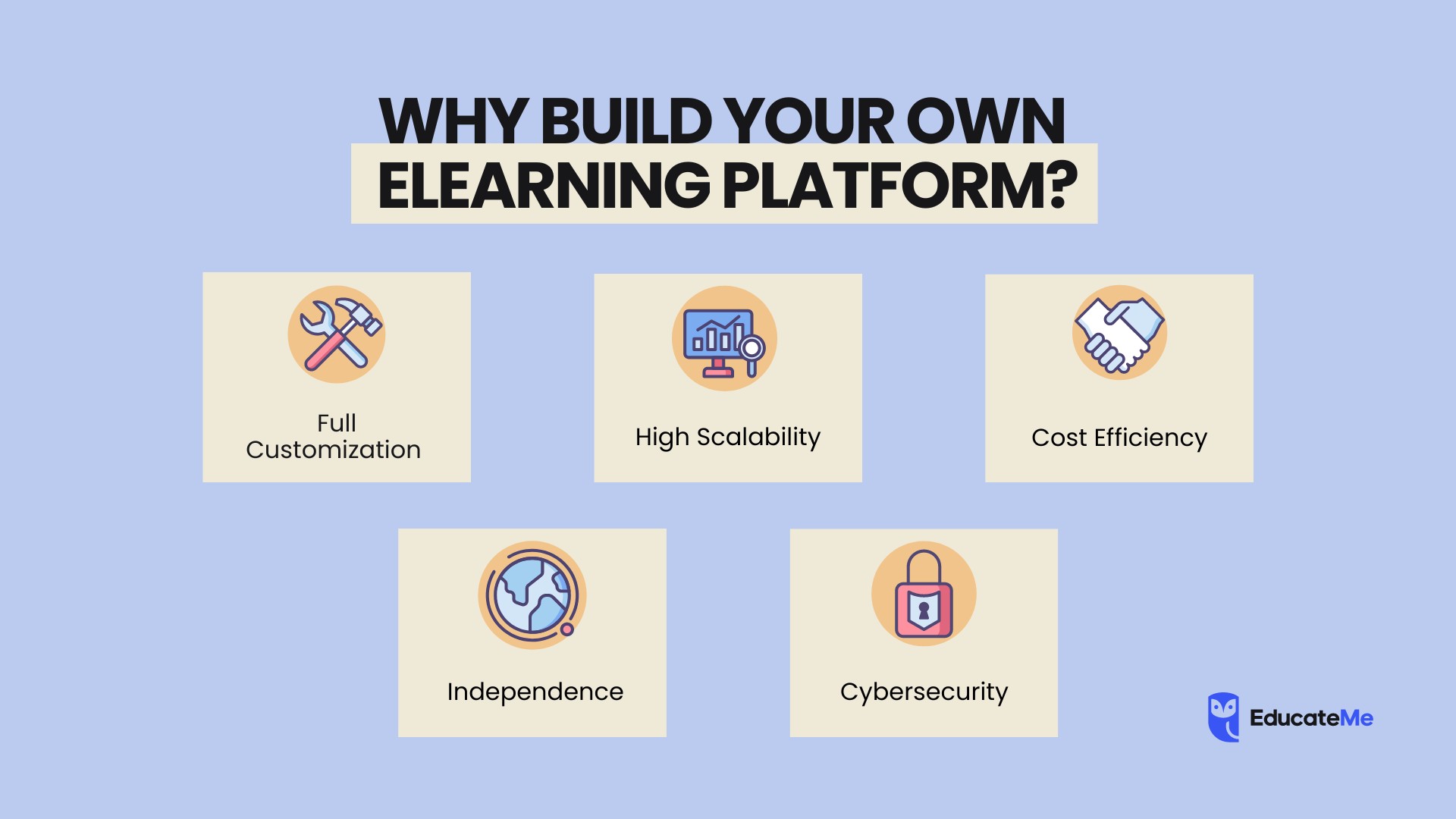Creating an online learning platform is a significant undertaking, but the rewards can be substantial. A well-designed platform bridges the gap between learners and instructors, transcending geographical limitations and offering flexible learning opportunities. This guide delves into the essential steps and considerations for building a successful online learning platform.
.png)
Why Build Your Own Online Learning Platform?
While utilizing existing learning management systems (LMS) might seem cost-effective initially, developing a custom solution offers distinct advantages:
Customization and Scalability
Tailor your platform to meet specific business needs and scale it seamlessly as your user base and content grow. Proprietary platforms offer unparalleled flexibility compared to off-the-shelf solutions.
Cost-Efficiency in the Long Run
Although initial development costs might be higher, owning your platform eliminates recurring subscription fees and vendor lock-in, proving more economical long-term. Leveraging no-code platforms can also significantly reduce initial development costs.
Independence and Control
Maintain complete control over your platform’s features, functionality, and data, ensuring alignment with your organization’s evolving requirements and strategic objectives.
Enhanced Security
Implement robust security measures tailored to your specific needs, safeguarding sensitive data and ensuring compliance with industry regulations.
Essential Features of an Online Learning Platform
A successful online learning platform should incorporate the following key features:
Core Features:
- Course Creation and Management: Enable easy creation, organization, and delivery of diverse learning content.
- Learner Management: Facilitate user registration, progress tracking, and performance analysis.
- Assessment and Feedback: Provide tools for quizzes, assignments, and personalized feedback.
- Mobile Accessibility: Ensure seamless access across various devices for optimal learning experiences.
- Collaboration Tools: Foster interaction through forums, chat functionalities, and video conferencing.
Advanced Features:
- Personalized Learning Paths: Cater to individual learner needs with customized learning journeys.
- Gamification: Enhance engagement and motivation through interactive elements and rewards.
- E-commerce Integration: Monetize courses and manage subscriptions efficiently.
- Skills and Certification Tracking: Document learner achievements and provide verifiable credentials.
Steps to Build Your Online Learning Platform
Building an online learning platform involves a structured process:
-
Define Goals and Audience: Identify your target audience, learning objectives, and desired features.
-
Develop Architecture and Prototype: Design the platform’s structure, user roles, and interactions. Utilize tools like flowcharts and mockups to visualize the design.
-
Development and Coding: Implement the platform’s functionalities using appropriate programming languages and frameworks. Adhere to best practices like unit testing and code review.
-
Testing and Quality Assurance: Rigorously test all features to ensure functionality and user experience across different devices.
-
Implementation and Maintenance: Deploy the platform, provide ongoing technical support, and implement regular updates and bug fixes.
-
Documentation: Create comprehensive documentation for developers, administrators, and end-users.
.png)
Cost Considerations
Development costs vary significantly based on complexity, features, and geographical location of the development team. Factors influencing cost include hourly rates, project duration, and the chosen technology stack. Building a minimum viable product (MVP) first can help validate your platform and minimize initial investment.
Conclusion
Creating a successful online learning platform requires careful planning, execution, and ongoing maintenance. By following these steps and considering the essential features, you can build a robust platform that meets your specific learning and business objectives. While custom development offers significant advantages, thoroughly evaluate your needs and resources to determine if it’s the optimal solution for your organization. Exploring existing LMS solutions might be a more viable alternative for some.
